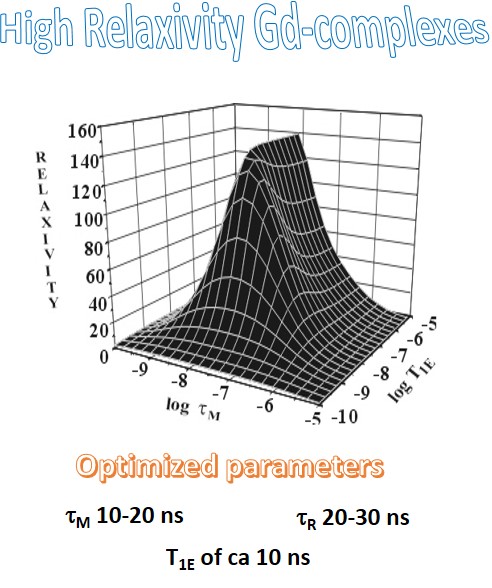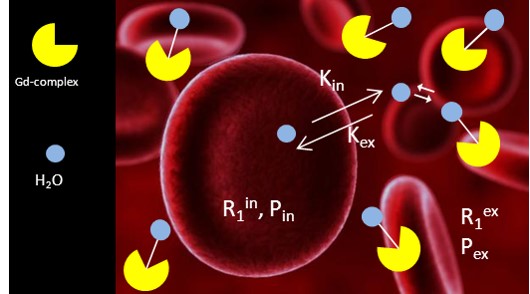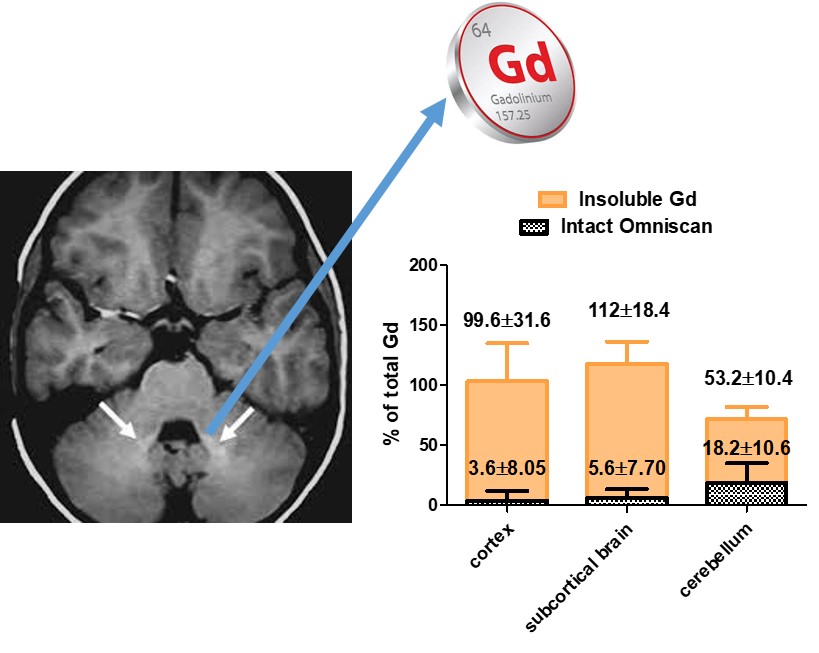RESEARCH OVERVIEW
Study of the dynamic and structural properties of
paramagnetic metal complexes with potential applications in
MRI and Molecular Imaging.

The sensitivity issue of MRI technique is related the
intrinsic Relaxivity of a given Contrast Agent. The chemists
have to design systems endowed with structural and dynamic
properties that lead to optimized values for those
parameters that are relevant for a given contrast enhancing
mechanism. Much work has been done and is ongoing to design
structures with high relaxivity.
Continue Reading >>

This research line relies on the fact that simple and
cheap relaxometric methods can be set-up in order to answer
to particular medical or biological needs. The main
advantage of the relaxometric methods is that the measure of
the observed relaxation rate is fast and straightforward and
several types of relaxometer are commercially available at
easily affordable costs.
Continue Reading >>

Recently, several studies have shown increased signal
intensity on unenhanced T1-weighted MR images in some brain
regions in patients with normal renal function who had
previously received multiple doses of GBCAs. The observed
hyperintense signal has been associated with the retention
of small amounts of gadolinium in the brain. There has been
evidence that both linear and macrocyclic GBCAs can yield
detectable gadolinium traces in the brain, with linear
neutral agents leaving greater quantities.
Continue Reading >>


